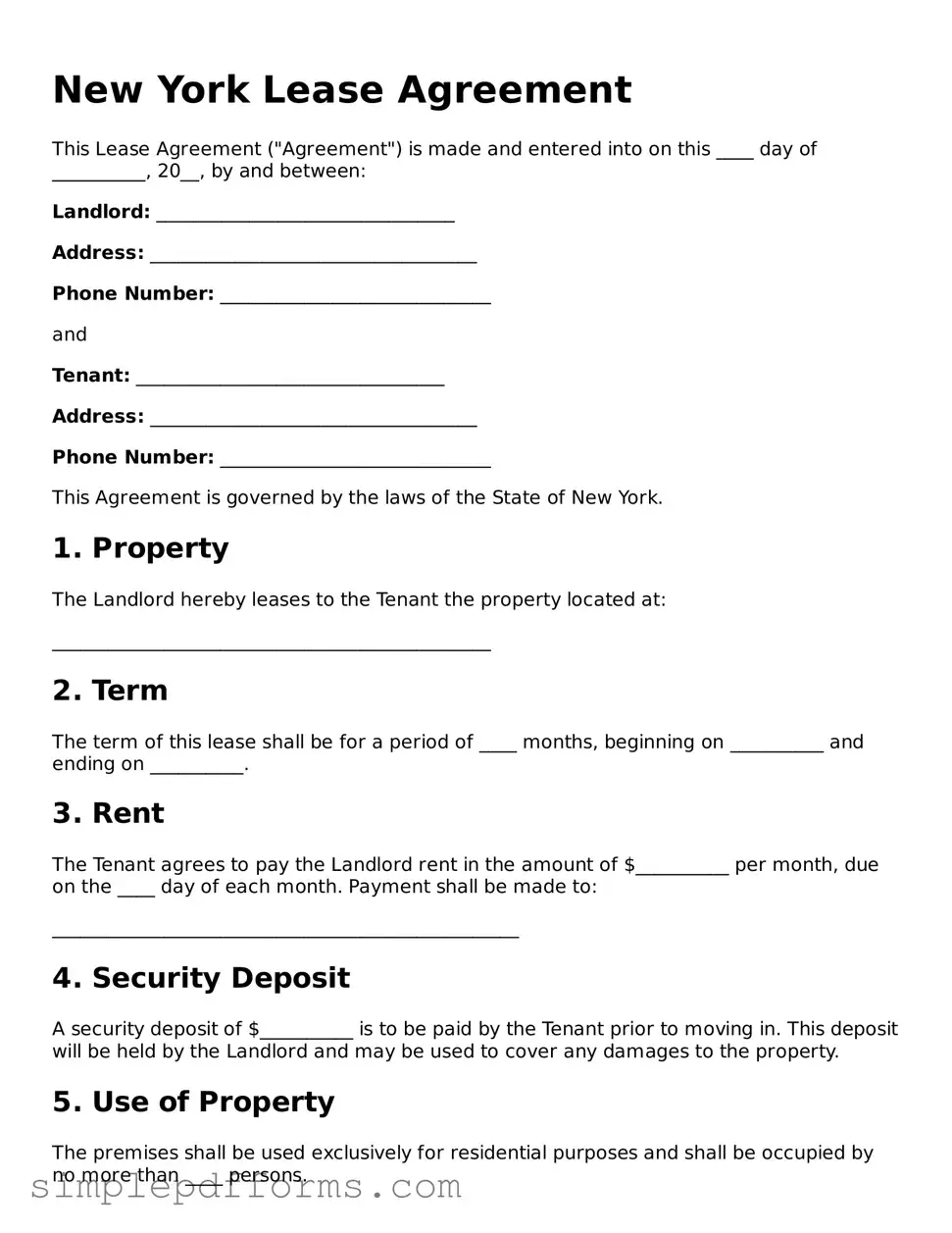New York Lease Agreement
This Lease Agreement ("Agreement") is made and entered into on this ____ day of __________, 20__, by and between:
Landlord: ________________________________
Address: ___________________________________
Phone Number: _____________________________
and
Tenant: _________________________________
Address: ___________________________________
Phone Number: _____________________________
This Agreement is governed by the laws of the State of New York.
1. Property
The Landlord hereby leases to the Tenant the property located at:
_______________________________________________
2. Term
The term of this lease shall be for a period of ____ months, beginning on __________ and ending on __________.
3. Rent
The Tenant agrees to pay the Landlord rent in the amount of $__________ per month, due on the ____ day of each month. Payment shall be made to:
__________________________________________________
4. Security Deposit
A security deposit of $__________ is to be paid by the Tenant prior to moving in. This deposit will be held by the Landlord and may be used to cover any damages to the property.
5. Use of Property
The premises shall be used exclusively for residential purposes and shall be occupied by no more than ____ persons.
6. Utilities
The following utilities will be paid by the:
Utilities include:
- Electricity
- Gas
- Water
- Internet
7. Maintenance and Repairs
The Tenant agrees to keep the premises in clean and sanitary condition. The Landlord is responsible for major repairs unless caused by Tenant negligence.
8. Termination
Either party may terminate this lease by providing ____ days written notice prior to the termination date.
9. Governing Law
This Agreement shall be governed by and construed in accordance with the laws of the State of New York.
10. Signatures
By signing below, both parties agree to the terms and conditions of this Lease Agreement:
Landlord Signature: _______________________ Date: __________
Tenant Signature: _______________________ Date: __________
